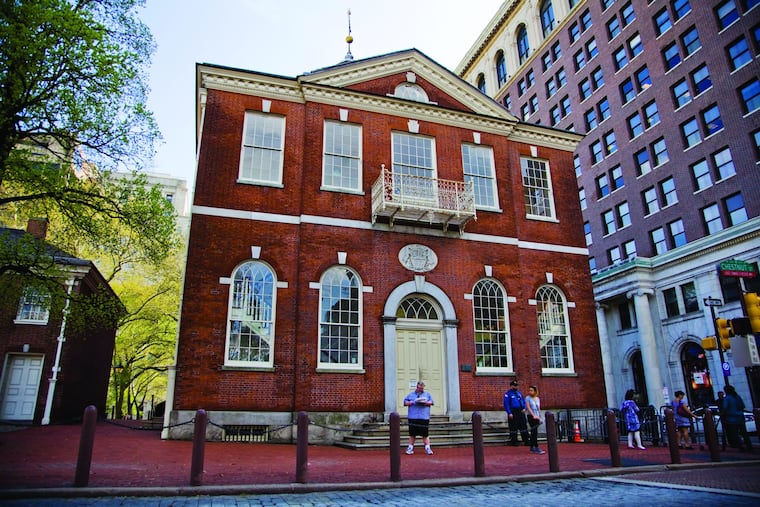As Trump balks at transfer of power, pay homage to Philly site where it first occurred peacefully | Opinion
Philly’s Congress Hall, site of America’s first peaceful transfer of power, should be a beacon in 2020.

When my family moved to Philadelphia a decade ago, I learned that barely 50 yards away from the appropriately named Independence Hall — where the Declaration of Independence was signed and the U.S. Constitution was born — is Congress Hall.
Though often overlooked, Congress Hall deserves equal respect, because it is where George Washington performed his last public act before retiring to private life. It was the first time in our recorded modern history that power transferred from a head of state to the next without bloodshed or death.
As America anticipates the inauguration of a new president-elect, and we are once again readying for a transfer of power, what took place in Congress Hall over 200 years ago should be our beacon today.
» READ MORE: So is Trump staging a coup, or what? | Will Bunch
When the American Revolution succeeded, Washington probably could have crowned himself king. After all, he was a towering hero revered by all, arguably the richest and most powerful man in America, and he had the entire Continental Army under his command. Those ingredients usually lead to military rule, as with Caesar, Franco, Castro, or Gaddafi. Instead, as soon as the peace treaty was signed, Washington resigned his command to return to his farm, supposedly causing King George III to call him “the greatest character of the age.”
But, of course, every time Washington thought he was out, America pulled him back in. We elected him to be our first president. And elected him for a second term — and had he wanted a third, fourth, or fifth term, they were his for the asking. (This was over 150 years before the 22nd Amendment created the two-term limit.) Yet, as everyone knows, Washington instead chose to pass his baton, setting the stage for John Adams to become our second president, and for the American Experiment to continue on and live beyond Washington’s administration.
» READ MORE: In the city where it all began, the American Experiment gets a gleeful do-over | Will Bunch
On March 4, 1797, there was no, “The king is dead, long live the king.” No battle or banishment. Just a remarkably unremarkable exchange of titles. Adams wrote to his wife Abigail, “Methought I heard him think Ay! I am fairly out and you fairly in! see which of Us will be happiest.” And so began our new tradition, where power is peacefully transferred from one head of state to another. Willingly. Gladly. Patriotically. It was Adams’ inauguration, but it was Washington’s act that changed the world on that day.
“When the Ceremony was over,” Adams said, “he came and made me a visit and cordially congratulated me and wished my Administration might be happy, successful and honourable.” To grasp the magnitude of the event, consider what George Washington had and what he was walking away from. No wonder Napoleon — who had commanded a revolt and then crowned himself emperor — eventually rued, “They wanted me to be another Washington.”
As much as I want all our presidents to be another Washington — I’ll settle for a plain old traditional American peaceful transfer of power. Please.
Randy Freed is a design engineer, musician, and father of three.